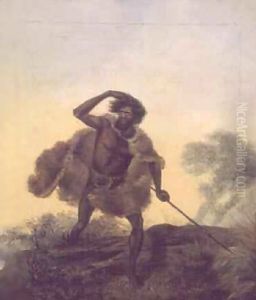Thomas Tyrwhitt Balcombe Paintings
Thomas Tyrwhitt Balcombe was an English-born artist who achieved recognition for his work in the mid-19th century, particularly in Australia. Born in 1810 in London, he was the son of Thomas Balcombe, an employee of the British East India Company. His early life was marked by his family's relocation to Saint Helena, where his father was stationed, and it was here that young Thomas would have his first encounters with significant historical figures, such as Napoleon Bonaparte, who was in exile on the island.
Balcombe's artistic talent became evident at an early age, and his experiences on Saint Helena would later influence his work. In 1824, the Balcombe family moved to New South Wales, which was then a British colony. The young artist's skills flourished in this new environment, and he began to earn a reputation for his portraiture and depictions of the Australian landscape.
Throughout his career, Balcombe worked in a variety of mediums, including oil painting, watercolor, and drawing. His works often depicted the burgeoning settlements of Australia, as well as the indigenous people and the unique flora and fauna of the continent. His attention to detail and ability to capture the essence of his subjects made him a sought-after portraitist among the colonial elite.
Despite his success, Balcombe's life was not without hardship. Financial struggles were a recurring issue, and he often sought government patronage to support his artistic endeavors. In 1841, he was appointed as a clerk to the Colonial Secretary, a position he held for several years while continuing to paint. However, his career was cut short by his untimely death in 1861, in Sydney.
Thomas Tyrwhitt Balcombe's contribution to the art of Australia during its early colonial period is significant. His works are appreciated for their historical value as well as their artistic merit. They offer a window into the life and times of early Australian society, capturing the landscape and characters of an era that was rapidly changing. His paintings and drawings are held in several Australian public collections, including the National Library of Australia and the State Library of New South Wales, preserving his legacy for future generations to appreciate.

